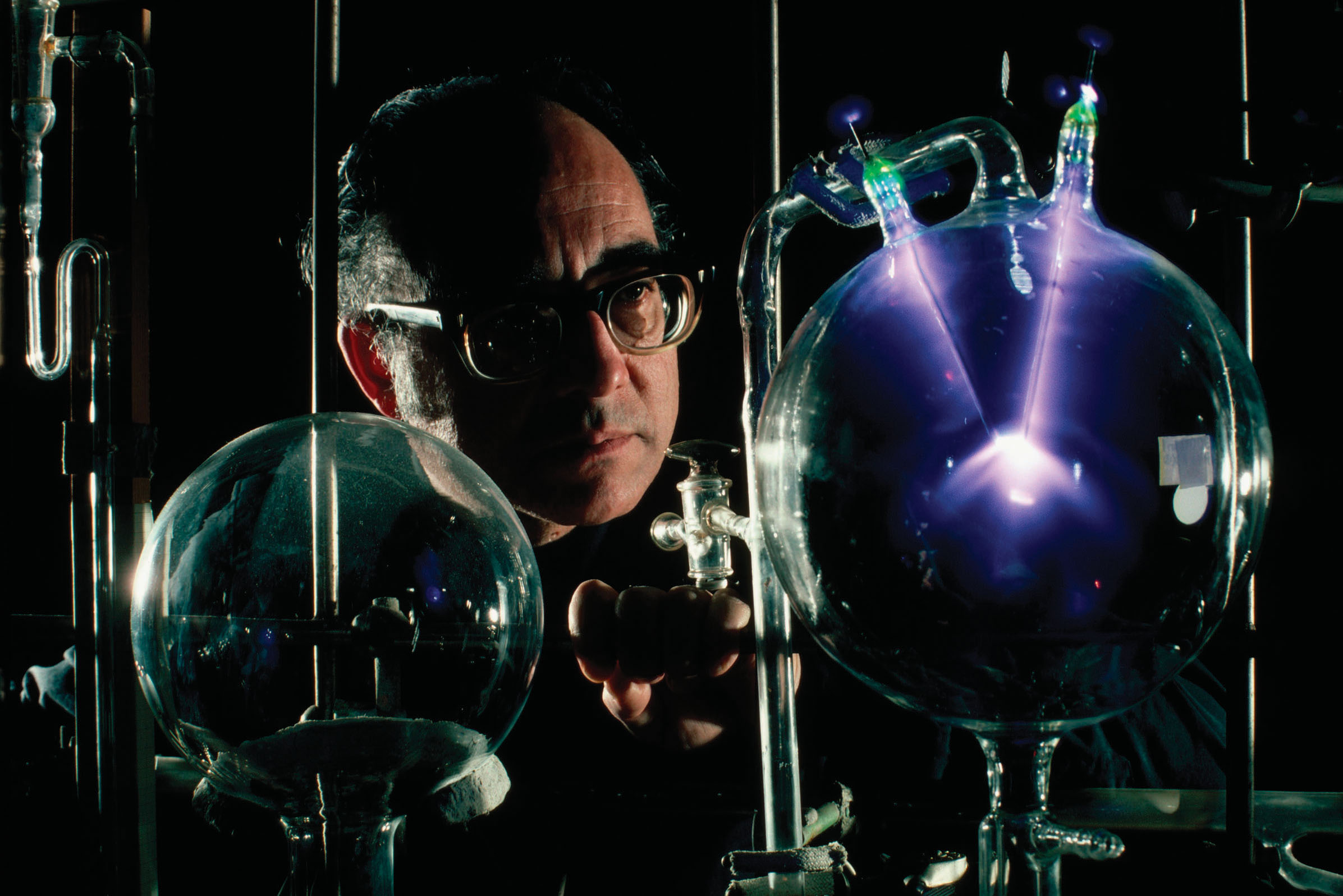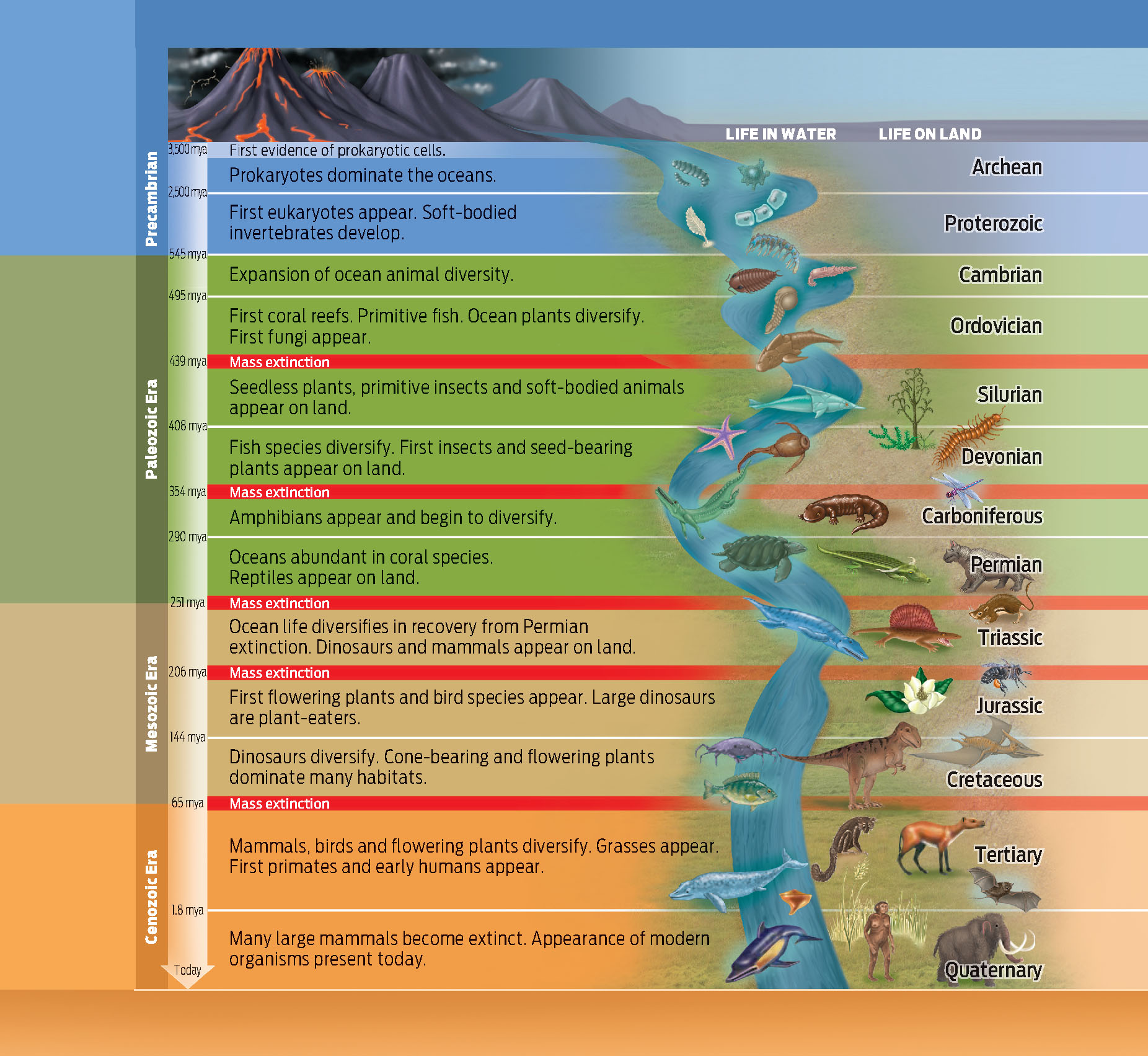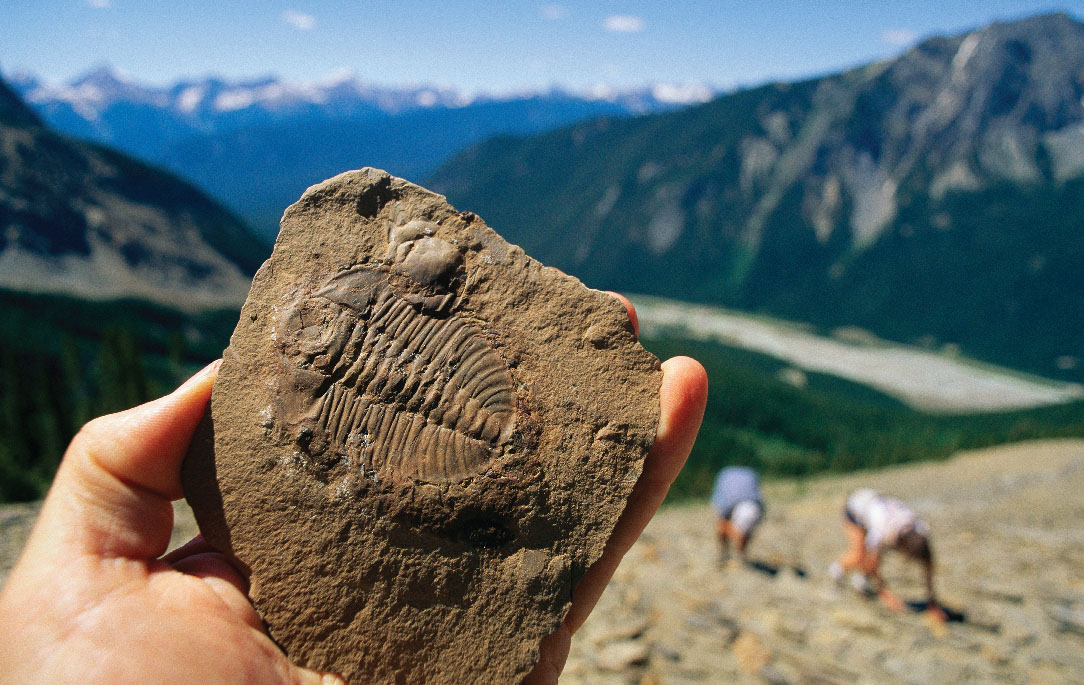Paleontology
 What was life like millions of years ago?
What was life like millions of years ago?
ANSWER: Humans weren’t around millions of years ago, so we have no cave paintings or other records to help us picture what life on Earth was like. Most of what we know about past life on Earth comes from fossils—the preserved remains of once-living organisms, such as Tiktaalik, discussed in Chapter 16.

378
While each fossil find is a treasure, any single specimen reveals only a tiny slice of evolutionary history. What paleontologists really want to understand is how each fossil fits into the larger story told by the fossil record. By dating the rock layers, or strata, near where fossils are buried, scientists can determine when different organisms lived on Earth. Combined with geological evidence, the fossil record has enabled scientists to construct a timeline of life on Earth (INFOGRAPHIC 17.3) .

379
The timeline shows that during the 4.6 billion years that Earth has been around, its geography and climate have gone through dramatic changes. For the first few hundred million years or so Earth was a fiery inferno, coursing with seas of molten lava and bombarded by meteorites. Not until things simmered down and the surface cooled a bit, around 3.8 billion years ago, could it support life.
The oldest known fossils date from some 3.5 billion years ago, when Earth’s climate was very different from what it is today, notably because of the absence of substantial amounts of oxygen (O2). In this oxygenless world, the only organisms that could thrive were unicellular prokaryotes that did not rely on oxygen for their metabolic reactions. With the emergence and proliferation of unicellular photosynthetic organisms, between 3.0 and 2.5 billion years ago, oxygen began to accumulate in the atmosphere, opening the door for more-complex eukaryotic organisms to evolve.
The first multicellular, eukaryotic organisms to make use of this oxygen were green algae, which appeared 1.2 billion years ago. Soft-bodied aquatic animals followed, about 600 million years ago, but it is only since about 545 million years ago, during the Cambrian Period, that we see fossil evidence of a truly diverse animal world. During the Cambrian explosion, as this event is known, ocean life swelled with a mind-boggling array of strange-looking creatures, including Opabinia, an organism with five eyes and a snout resembling a vacuum-cleaner hose, discovered in fossils from this period.
EXTINCTION The elimination of all individuals in a species; extinction may occur over time or in a sudden mass die-off.
The first organisms to colonize land were primitive plants, appearing roughly 450 million years ago. By 350 million years ago, forests of seedless plants covered the globe.
ADAPTIVE RADIATION The spreading and diversification of organisms that occur when they colonize a new habitat.
Then, 250 million years ago, life was drastically cut down: roughly 95% of living species were extinguished in a mass die-off known as the Permian extinction. Scientists do not know what caused the Permian extinction, but some hypothesize that massive volcanic activity filled the atmosphere with heat-trapping gases that led to a rapidly changing climate. The Permian extinction wasn’t bad for all organisms, though; some flourished as space and resources opened up for the survivors, who spread and diversified as a result in a phenomenon known as adaptive radiation. Among these were reptiles, who thrived in the hot, dry climate of the following Triassic Period. The most famous group of reptiles, the dinosaurs, dominated the land for nearly 200 million years, thanks to a combination of drought-resistant skin and fast-moving legs, until they died out in another mass extinction at the end of the Cretaceous Period, 65 million years ago.
MASS EXTINCTION An extinction of between 50% and 90% of all species that occurs relatively rapidly.

PUNCTUATED EQUILIBRIUM Periodic bursts of species change as a result of sudden environmental change.
The reason for the extinction of the dinosaurs was a mystery for many years. Evidence now suggests that what killed off the dinosaurs (and 60% of the other species living at the time) was a massive 6-mile-wide asteroid that plowed into Earth with almost unimaginable force, sending a thick layer of soot and ash into the atmosphere and blocking out the sun for months. A crater 110 miles wide in Mexico’s Yucatán peninsula, near the town of Chicxulub, is the likely impact site.
With the extinction of the dinosaurs, it was mammals’ chance to spread and diversify on land and thus give rise to many of the species of organisms we see on the planet today. This pattern of sudden change—extinctions followed by adaptive radiations—is seen in the fossil record and is an example of punctuated equilibrium, in which most evolutionary change occurs in sudden bursts related to environmental change rather than taking place gradually.
380